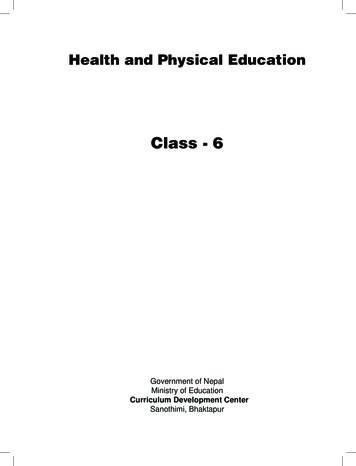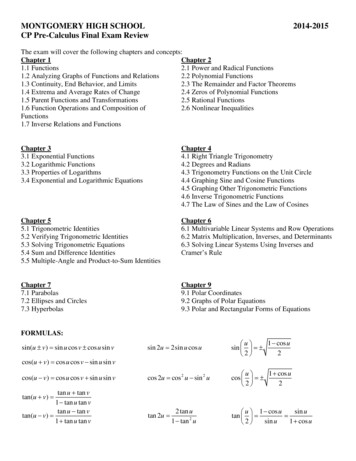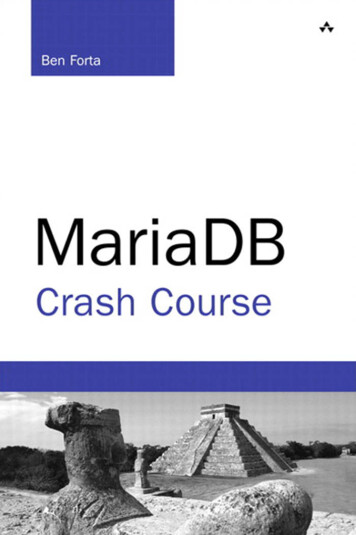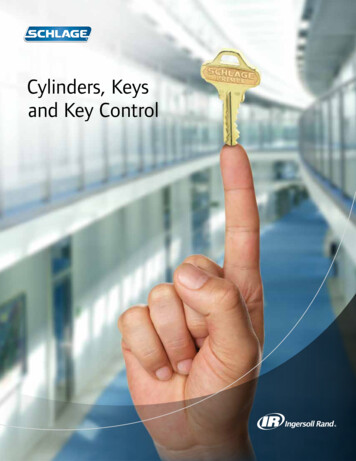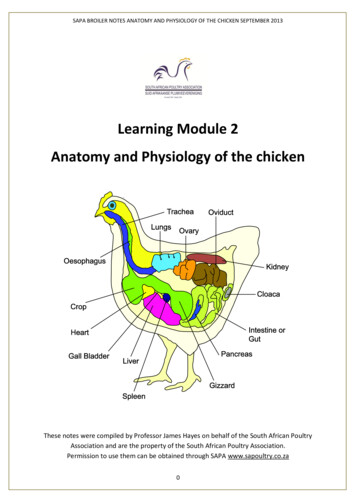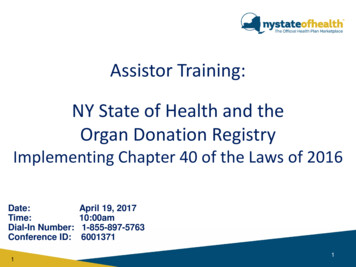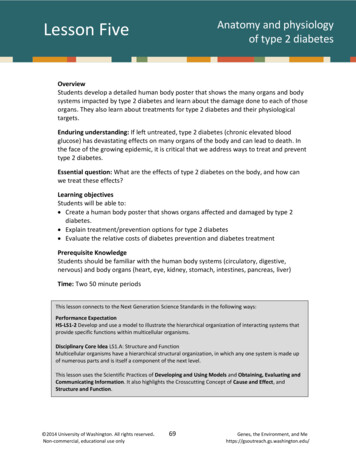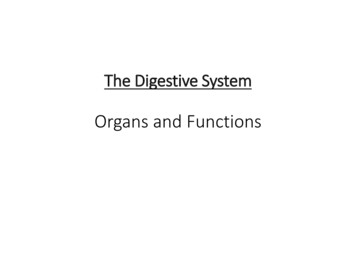
Transcription
The Digestive SystemOrgans and Functions
Phases of Digestion Phases Include1. Ingestion2. Movement3. Mechanical and Chemical Digestion4. Absorption5. Elimination
Digestion Mechanical (physical) Chew, tear, grind, mash, and mix Chemical Enzymatic reactions to improve digestion ofcarbohydrates, proteins, and lipids
Digestive System Organization Gastrointestinal (Gl) tract Direct link/path between organs Structures MouthPharynxEsophagusStomachSmall intestineLarge IntestineRectum4
Mouth Teeth mechanically breakdown food into small pieces. Tongue mixes food withsaliva (contains amylase,which helps break downstarch). Epiglottis: flap-like structureat the back of the throat. Closes over the tracheapreventing food from enteringit. It is located in the Pharynx.
Esophagus Approximately 20 cm long. Functions include: Secretingmucus and moving food from thethroat to the stomach usingmuscle movement calledperistalsis Mouth, Pharynx and Esophagus Video
Stomach J-shaped muscular bag that stores the foodand breaks it down into tiny pieces. Mixes food with gastric juices that containenzymes to break down proteins and lipids. Hydrochloric acid in the stomach killsbacteria. Food found in the stomach is called chyme.7
Small Intestine Small intestines are roughly 7 meters long Lining of intestine walls has finger-like projectionscalled villi, to increase surface area. The villi are covered in microvilli which furtherincreases surface area for absorption.Crash Course Review8
Small Intestine Nutrients from the food pass intothe bloodstream through thewalls of the small intestine. Absorbs: 80% ingested water Vitamins Minerals Carbohydrates Proteins Lipids Secretes digestive enzymes9
Large Intestine About 1.5 meters long Absorbs nutrients left behind by thesmall intestines. The end of the large intestine is therectum. (short term storage whichholds feces before it is expelled).
FunctionsLarge Intestine Bacterial digestion andfermentation ofcarbohydrates Absorbs additionalwater Concentrateswastes
Accessory Organs- The Glands Not part of the path ofingested food, but play acritical role in digestion. Includes: Liver, gallbladder, and pancreas
Liver Directly affects digestion by producingbile Bile aids in the digestion of fat Filters out toxins and waste includingdrugs, alcohol and poisons.13
Gall Bladder Stores bile from the liver,releases it into the smallintestine. Fatty diets can cause theformation of gallstones
Pancreas Produces digestiveenzymes to digest fats,carbohydrates andproteins Regulates blood sugar byproducing insulinWeb Page Reinforcement Video
On a sheet of paper, write the name of eachcolored organ: Green: Red: Pink: Brown: Purple: Green: Yellow:
How’d you do? Green: Esophagus Red: Stomach Pink: Small Intestine Brown: Large Intestine Purple: Liver Green: Gall Bladder Yellow: PancreasGreat Job!
References and Links Your Digestive System and How It Works Digestive system diagram comes from this site The Real Deal on the Digestive System Pancreas: Introduction and Index Your Gross and Cool Body - Digestive System Laurentian Regional High School Data Base- you must know the Username and Password
Crash Course Review. Small Intestine Nutrients from the food pass into the bloodstream through the walls of the small intestine. Absorbs: 80% ingested water Vitamins Minerals Carbohydrates Proteins Lipids S
